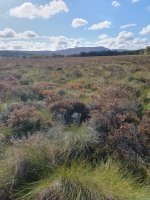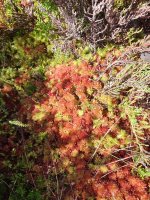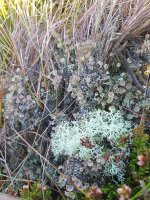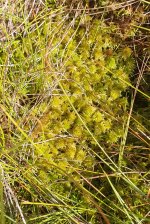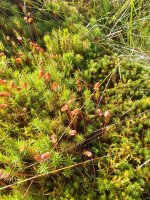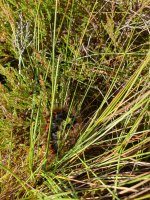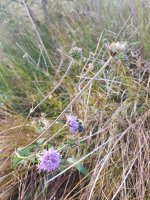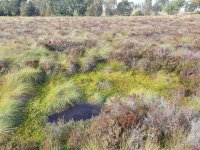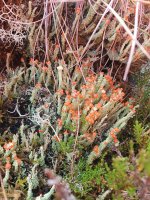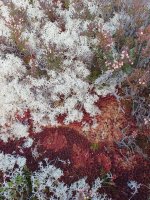Michael P
Omono
I like your conservation and natural history posts! And I would like to see the deer skull. Skulls have been used in many bonsai compositions, mostly cheesy. But Nick Lenz did some great ones.
I've had zero success with transplanting bilberries for use as accents. I think they rely on fungal associations in the soil.Yes we have them too, I've had thoughts on how to utilize these native species as kusamono and accent plants
I have cultivated drosera for years, sphagnum peat moss and rain water are the best. They don't need anything else. Locally I found them growing in sand too, as long as it's soaking wet every winter and spring.Just a little post to keep my bogland activities up to date. No pines this time, sorry.
In June I spent a week doing conservation work on the west coast, one of the days was birch pulling in a raised bog.
Other species we removed were Picea sitchensis and Rhododendron ponticum.
Sharing some of my finds.
My first time seeing Drocera (rotundiflora... I believe) one of three species of carnivorous plants in the UK.
It would be quite interesting to try and cultivate drocera, possibly in the water which I grow my taxodium distichum.
View attachment 611068
View attachment 611069
This little frog guy
View attachment 611070
Some quite dehydrated Polytrichum strictum (bog haircap moss) native to sphagnum bogs. I find the colours and forms of bog mosses fascinating, but ive much to learn.
View attachment 611073
This little lizard guy hanging out on the boardwalk as we had lunch.
View attachment 611074
I took more photos on my 35mm which I've yet to develop.
There were also quite a few dragonflies, damsen flies etc, but very hard to photograph.
Thanks.
E.L.L
Nothing special, get as much root as possible and so on.Good to know @TomB
How were they transplanted and what sort of substrate have you used?
The bog was quite dry and covered in Heather (unsure on species, something i will learn to ID for future posts.)
